Andreas Hagenbuch Sails Aboard the Charming Nancy
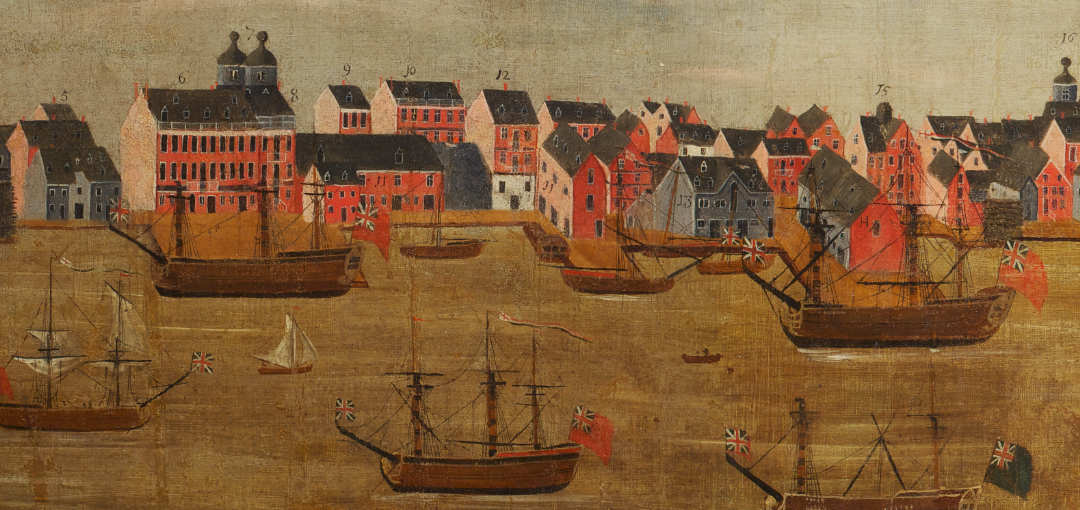
1737 is an important year for the Hagenbuch family. It was the year Andreas Hagenbuch (b. 1715) and his first wife, Maria Magdalena (Schmutz), landed in Philadelphia to begin a new life in the Americas.
Andreas was 22 years old the year he journeyed across the Atlantic to the Pennsylvania Colony. He was likely living in Grossgartach (now called Leingarten). Leingarten lies just outside of Heilbronn which is on the Neckar River. In 1737, these towns were located within the Duchy of Württemberg, near the Electorate of the Palatinate, and were part of the Holy Roman Empire. Today, this region is in modern-day Germany between Stuttgart to the west and Heidelberg to the east.
The Palatinate and nearby areas had been repeatedly invaded by the French during the War of Succession, leading to devastation and famine for the people living there. There was also the threat of religious persecution. The Hagenbuchs were Lutherans, while the French were Catholics.
Andreas’ mother, Anna Christina (Fritz) Hagenbuch (b. 1692), had died in 1727 and his father, Hans Michael Hagenbuch (b. 1685), in 1735. With no parents to attend to, Andreas was likely eager to set out on his own. On April 26, 1737, he did just that and married Maria Magdalena Schmutz, the daughter of Jacob Schmutz. The couple was married in Schluchtern, a neighboring town to Grossgartach. It is believed that Maria Magdalena was already pregnant with their first child together, Henry.
Married and with a child on the way, the couple decided to leave for America and settle in Pennsylvania. They planned to board a ship at Rotterdam, in what was then called the Dutch Republic (now known as the Netherlands). The easiest route to Rotterdam was via a boat on the Neckar River to Heidelberg. Here, the Neckar joins the Rhine River. Once on the Rhine, they could continue by boat to Rotterdam, where passage on a larger vessel could be purchased. Still, a river journey might have taken them several weeks to complete.
Once in Rotterdam, Andreas and Maria Magdalena boarded a ship named the Charming Nancy. Passage for an adult ranged from five to ten pounds sterling. Children were less. The Charming Nancy had been built in Philadelphia, Pennsylvania, which was then part of Great Britain’s colonies in North America. It was 115 tons and was launched on November 18, 1736. It was registered to John Stedman, Alexander Andrew, and George Catanach. All three men were from London. John’s brother, Charles Stedman, would captain the ship on its voyage.
Andreas and his family set sail aboard the Charming Nancy on June 29, 1737. They arrived in Plymouth, England on July 8th. There they spent nine days, loading additional supplies for the long voyage across the Atlantic. More passengers boarded too.
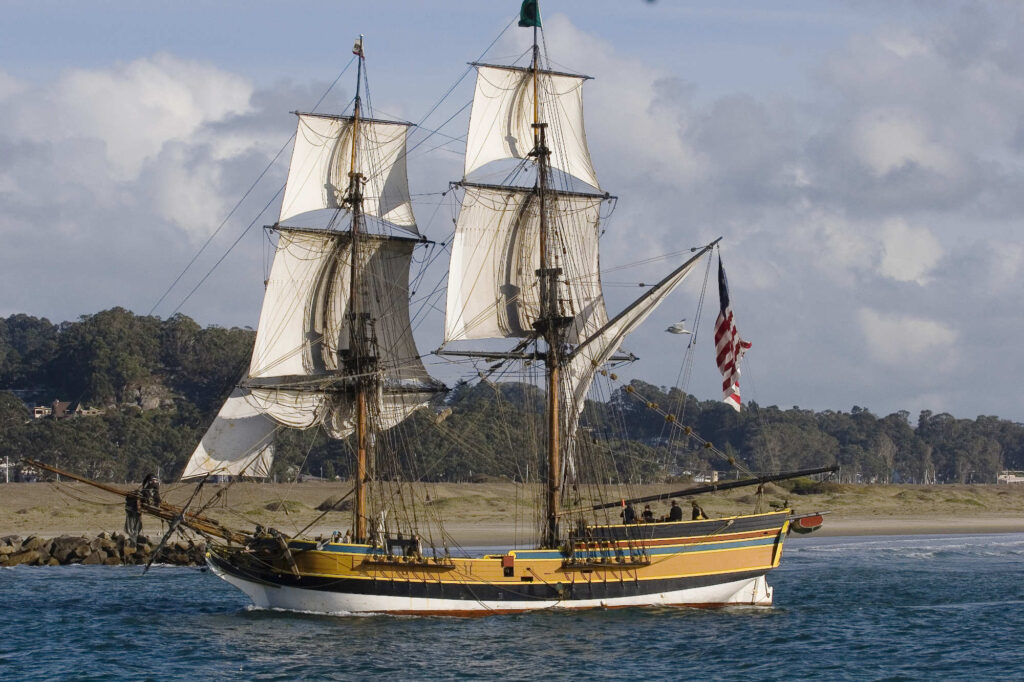
Lady Washington, a modern replica of a 1700s sailing ship similar to the Charming Nancy. Credit: Wikimedia.org/”Mike” Michael L. Baird
On July 17, 1737 the Charming Nancy left the port at Plymouth and began its journey to America. Traveling by sea in the 1700s was a cramped, unpleasant, and an often deadly ordeal. In a work of fiction from 2015, author Susanne Woods Fisher imagined what life would have been like on the ship.
In addition, we are lucky enough to have a brief, firsthand account of this specific voyage from Rotterdam to Philadelphia. This was written by Bishop Hans Jacob Kauffman on an old Swiss calendar, which was later discovered in a Bible. He writes:
The 28th of June while in Rotterdam getting ready to start, my Zernbli died and was buried in Rotterdam. The 29th we got under sail and enjoyed only 1-1/2 days of favorable wind. The 7th day of July, early in the morning, died Hans Zimmerman’s son-in-law. We landed in England the 8th of July, remaining nine days in port during which five children died.
Went under sail the 17th of July. The 21st of July my own Lisbetli died. Seven days before Michael’s Georgli had died. On the 29th of July three children died. On the 1st of August my Hansli died and Tuesday previous five children died. On the 3rd of August contrary winds beset the vessel from the first to the 7th of the month, three more children died. On the 8th of August Shambien’s Lizzie died and on the 9th died Hans Zimmerman’s Jacobi. On the 19th Christian Burgli’s child died. Passed a ship on the 21st. A favorable wind sprang up. On the 28th Hans Gasi’s wife died.
Passed a ship 13th of September. Landed in Philadelphia on the 18th, and my wife and I left the ship on the 19th. A child was born to us on the 20th—died—wife recovered. A voyage of 83 days.

Port of Philadelphia as painted by Peter Cooper in the early. Credit: Library Company of Philadelphia
Kauffman’s account vividly depicts the suffering endured by passengers aboard the Charming Nancy. Many people died, especially children, and their bodies buried at sea. After two months on the Atlantic, sighting land must have been cause for jubilant celebration.
Andreas Hagenbuch and his wife, Maria Magdalena (Schmutz), landed in Philadelphia, Pennsylvania on September 18, 1737. She was six months pregnant. Immigrant men 16 and older were required to sign the Oath of Allegiance to the King and the Oath of Abjuration, where they renounced previous loyalties. On October 8, 1737, Andreas and Maria Magdalena visited the courthouse in Philadelphia to take these oaths. Andreas signed in his own hand, while a third party signed “wife” for Maria Magdalena.
Thanks to the Pennsylvania Archives, we are able to see Andreas Hagenbuch’s signature as preserved on a microfilm copy of the original document. It’s interesting to see that Andreas was able to sign his full name to the oath. This indicates that he had some education and was able to write and probably read too. While this may not seem impressive today, in 1737 this put him above many other immigrants.
Notice the curved character Andreas has placed above the “u” in Hagenbuch. This is not an umlaut or other diacritical mark. Instead, it is a way of designating the character as a “u” in Old German, where the “u” could be confused with an “n” or “m”.
One can only imagine the hopes, dreams, and fears Andreas and Maria Magdalena had upon arriving in this foreign land. They were young, recently married, and would soon have a newborn to care for. Money was limited, and they would need to quickly acquire arable land in order to secure food and a livelihood. All the while, they spoke only German and would have to adjust to the English culture of the colonies.
In Philadelphia, the Hagenbuchs had no immediate family to support them that we know of. Although there was growing community of German immigrants in the city, if things didn’t go as planned, there was no quick return to Europe. Today, we know that they would never see their former home again.
Sailing aboard the Charming Nancy was only the first of many hardships Andreas Hagenbuch and his family endured on the path to build a life in Pennsylvania. Future articles will continue to follow the Hagenbuchs as they seek opportunities within a new and wild land.
This article was updated in 2020, 2021, and 2025. Updates include revising Andreas Hagenbuch’ birth year to 1715, removing Catherine as Andreas’ first wife since there is no evidence that she existed, removing Anna Barbara Hagenbuch as the eldest child because she is believed to have been born later, and finally noting that Henry Hagenbuch was born in December of 1737.

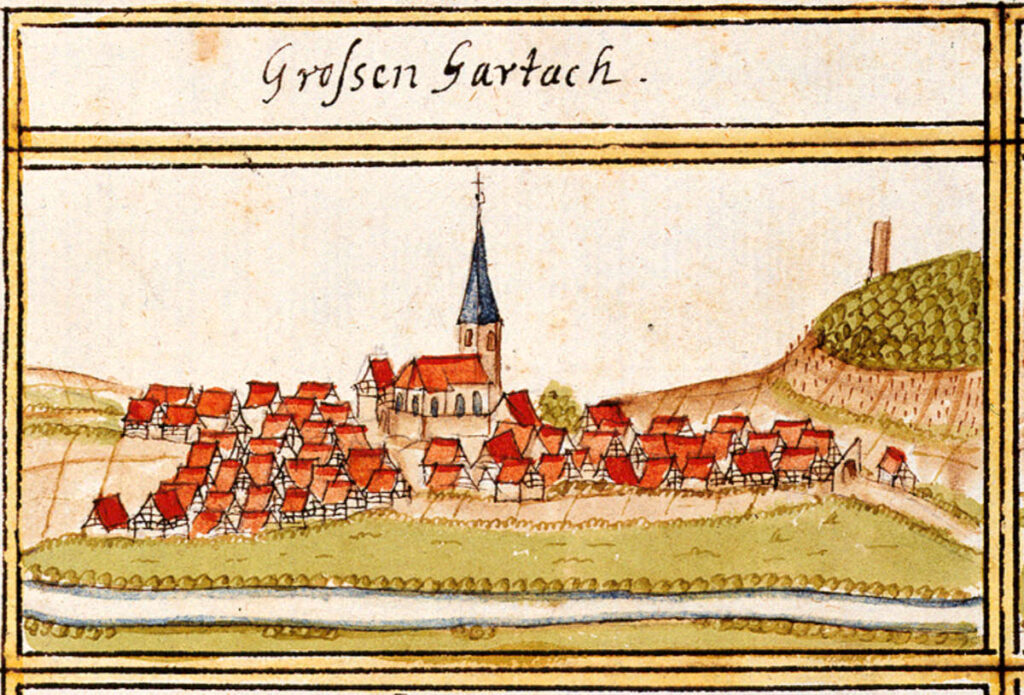

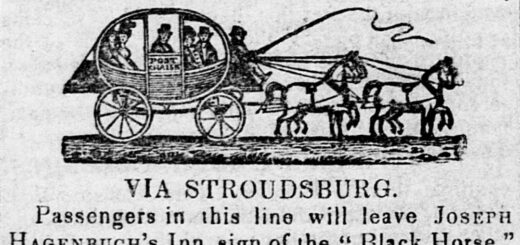
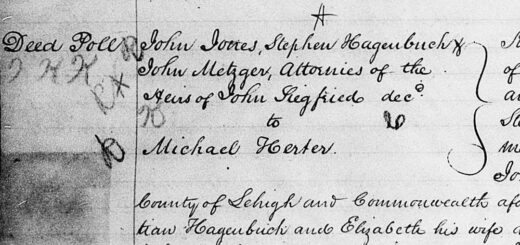
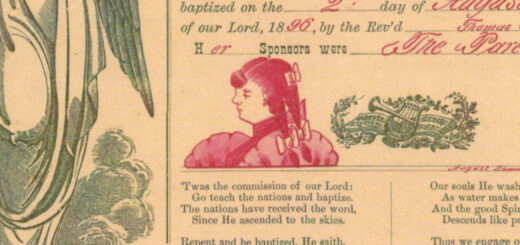









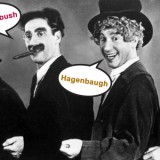




I love reading about your relative Andreas Hagenbuch. He is also my relative ( 6th GGFather) on my mother’s side through her grandfather, Hiram Cleveland Varner.
Hello distant cousin. My 6th great grandfather is also Andreas Hagenbuch! On my mother’s side through her grandmother who was Rosanna Hagenbuch. See my reply to Andrew below.
This is so exciting to find new cousins.
I’m interested to find out more information. I’ve been doing extensive research of my own family. This article is very similar to the story I found on my own ancestor Jorg Heinrich Ernstberger. Same ship, same arrival date, same wife, as well as Barbara being mentioned. I found my information through a historical organization. Let me know if you’d like to read what I have. I would like to get correct story before adding to my own family tree. Thank you Sara
Excellent Story Where did you get the formal description of the Charming Nancy ? My family arrived in American in 1738 on this same ship and I require a copy of the British Registry for her. thank you
Hi Charles. Glad you enjoyed reading it! So there are a few secondary sources out there that mention the ship as being 115 tons. Here is an example: http://www.oulton.org/cwa/newsships.nsf/pages/7794DA433813028185256C2300805494
However, we don’t have a primary source for the information at this time. If you come across one, please let us know!
Hello, distant cousin. My 6th gggrandfather was Andreas Hagenbuch who arrived in Philadelphia in 1737 on the Charming Nancy. A great granddaughter Rosanna Hagenbuch was my great grandmother on my mother’s side (through Beer/s, Redline, and Tobias). I was born in Reading, PA. I’d love to know your lineage. I’m so glad I found this Hagenbuch link for my genealogy research!
Hello Andrew,
So are you sure the photo you have of Philadelphia is actually that city. The reason I ask is I am comparing it with other early photos and there are no bun top roofs in that city.
Thanks
Hi Amy. Yes, I am fairly certain. I’ve seen a copy of the painting in Philadelphia. Also, you can find a higher resolution version here with the labels for the buildings: http://explorepahistory.com/displayimage.php?imgId=1-2-27F
Christain Burgi (Burkie) (Berkey), (Burgli), whose child died on the Charming Nancy on August 19, 1737, was my 5th great grandfather. I would love to see his signature. How do I access that archive? The current spelling in our area is Berkey but I have seen many alternate spellings.
Hi Sylvia. Wow, that’s neat that you can make a connection to the Christian Burgi mentioned in the above! PHMC discusses where to get copies of signatures on this page: https://www.phmc.pa.gov/Archives/Research-Online/Pages/Ships-Passenger-Lists.aspx
I found this so very interesting my family that came over were the Casper Nolf Family I was born a Fields in Elk county Pa and relatives also consist of Fields,bennett,Hutchins ,Leck
Hi Deborah. Was your family on the Charming Nancy as well?
Thanks for posting this amazing story. Johann Jacob Wetzel (I)-3515, last of Hereford Township, Berks County, PA. was my 5th great grandfather. He also was on the Charming Nancy and arrived (qualified), Oct. 8, 1737. I am Calvin James Wetzel Jr.-20609, Grandson of David George Wetzel-20612, Baptized, May 30, 1895 in Weatherly, Carbon County, PA. by pastor, A.M. Masonheimer. Reference numbers from, Charles Kerchner, Cmdr., USN, Retired, of Emmaus, PA. author of “Descendants chart for some Wetzel’s of S.E. PA.”
Thanks for the interesting story about Andreas Hagenbuch and his journey to the Colonies! He is my 6th great grandfather from his daughter, Anna Elizabeth b. 27 April 1754 in Albany, Berks, PA, who married John Adam Reichelsderfer. It’s just been hard to figure out who Anna’s mother was. It seems that she might be the 3rd wife of Andreas, Maria Margaret (Anna?) Friedler. Not sure!!
Hi Karin. Glad you enjoyed the article, and we would be interested to know more about your line. You can send us a message directly through the “Send Us a message” link in the upper right of the page.
Anna Elizabeth’s mother was Maria Margaretha Friedler, the third wife of Andreas. Her name is listed on Anna Elizabeth’s fraktur: https://www.hagenbuch.org/update-anna-elizabeth-hagenbuchs-fraktur/
Here is Anna Elizabeth in our Beechroots database too: https://beechroots.com/person/281/anna-elizabeth-hagenbuch-reichelderfer
This was a very insightful read. Great article.
3 of my paternal ancestors were on the Charming Nancy to Pennsylvania, Hans Jacob Barlin, Geo. Fredk. Barlin, and Abraham Barlin. I really wish I was able to find an accurate portrait of the Charming Nancy for my family tree, unfortunately I have yet to find one.
What I mean by accurate is that the ship in the portrait is the right one, as when I’ve done searching online, several paintings for ships come up all claiming to be the Charming Nancy, even some that are obviously named something else.
How am I to know which is the right one as they all look completely different from one another…very frustrating.
Hello Scottie. You should go to a more recent article to get information on what the Charming Nancy might have looked like. https://www.hagenbuch.org/andreas-hagenbuchs-charming-shipmates/ When I put that article together, I not only researched online, I also asked several people I know who are better informed than I am about tonnage of a ship, number of passengers said ship could carry, etc. Mark
Hi thanks for this interesting article! I live in Plymouth, England, and have been researching my maternal great grandmother’s lineage – she was from Pennsylvania and married British Great-Grandfather. Andreas seems to be my 8th great grandfather through his son Heinrich. Interesting to see that Andreas would have spent some time in my home town on the way to Pennsylvania.
Hi Leah. Glad you enjoyed it and thanks for reaching out! What a unique story and connection. We’d love to know more about your great grandmother and your Hagenbuch line. If you contact us via this page, we could discuss through email: https://www.hagenbuch.org/contact-us/ We look forward to hearing from you!
My paternal ancestors were on board the 1737 Charming Nancy, Peter Eschbacher (Espacher) on the manifest, along with his wife Eliza and newborn son Christian. He born in July, so either right before boarding or right after boarding. What an ordeal during the crossing with a newborn. They were Mennonites. Lived in the Bally area of Berks Co. Pa.
Hi William. Thanks for your comment and glad that you found our site! I also appreciate that you confirmed some children were, indeed, listed on the ship’s manifest. I took a look and saw all three of your ancestors were there!
I believe my great grandfather came over from Sweden in the mid 1890s. How do I find out previous information from Sweden and Switzerland family who came across in the 1770s as I have no family left who can give me this information and I do not know any previous names except Great Grandpa’s last name was Erickson?
Thanks for this bit of history. How is it that they arrived in Philadelphia on the 19th but did not qualify until October 8th? I can’t imagine they kept the passengers 3 weeks to qualify.
Hi Brian. Great question! I am not entirely certain, though I have some ideas. We do know from the first-hand account of Bishop Hans Jacob Kauffman above that they supposedly arrived on September 18, 1737 but weren’t officially processed until October 8, 1737 (widely recorded as the official arrival date on the passenger records filed with Pennsylvania). Kauffman also states the voyage was 83 days long, which is about correct with September 18th. (He looks to be off by about a day.)
It’s wasn’t uncommon for ships to remain anchored in the harbor until they could dock. There were also quarantine procedures if there was illness on board. Passengers who hadn’t been able to pay their way from the beginning had to wait to find an indenture to so they could leave.
All that said, Kauffman states that he and his wife left on the 19th. Perhaps this was due to her being about to give birth? Regardless, it is almost the certain the ship was docked for this to happen.
My hunch is that the October 8th date is simply the date of the official acceptance of the passenger list and oath takers at the courthouse. This was required in Pennsylvania. It is probable that the passengers had all disembarked before this and were not sitting on the ship for 3 weeks.
Because of the 1720 Oath of Loyalty Law. They had to wait for the Magistrate to sign loyalty to the British Crown.
Thanks for the replies to my question. This subject is near to my heart as my ancestors were aboard the Charming Nancy 1737. Benedict Leman/Lehman. I am trying to fill in the gap from landing until the first document that I know about. It is a land warrant in 1750 for the Northkill area. I suspect they went there directly but can not verify at this time. Northkill started in 1736.
Hi Brian. This sounds similar to what we see with Andreas Hagenbuch. We know he and his family were using some land that they didn’t get warrants for until later. It is entirely possible your ancestor (as you suggested) went to Northkill and was there in the late 1730s and 1740s before getting a land warrant in 1750. This was a wild, frontier area of Pennsylvania. One thing you might check (if you haven’t done so) is the warrants for land adjoining your ancestor’s property. Sometimes, if these were issued earlier, they may show your ancestor’s name as an adjoining property owner, supporting your theory he was there before 1750. One last idea is that your ancestor may have not bought land at first and worked for others or rented awhile. I learned a lot reading Caspar Wistar’s story regarding how someone could arrive penniless and work their way up without an indenture in the early 1700s: https://www.hagenbuch.org/caspar-wistars-story-tells-about-our-own/
Thanks so much for the suggestion, I will check that avenue out. He didn’t have many neighbors on the survey which is what leads me to believe he was there early. I have checked a few indentured lists but no luck. Records were not plentiful in the wilderness. My ancestors were Amish and I am sure they were not fond of record keeping in general. Thanks again.
Your website is very informative. Thank you for the information and details regarding the voyage of the Charming Nancy. My ancestor , Valentin Jung was also a passenger on that voyage.
Thank you so much for your very informative article. My ancestor was also on this ship with his son, Christian Geiger and Wilhelm. I appreciate any info that helps me understand why he would have undertaken this hazardous journey. Now I am trying to fill in the years until he shows up in Rockingham County, Virginia.
Thank you for putting this together! My Ancestors Christian & Barbara Hershberger were also on board the Charming Nancy on this voyage. I love to research and try to build a good timeline.
If you have any information regarding the Hershberger’s that were aboard I would love to know it.
Thank you,
Paul H
Thanks for the interesting article Andrew! I found the travelling down the Rhine description especially interesting. My direct ancestor, Jacob Beyeler was also on the 1737 voyage of The Charming Nancy, with his family. I saw something online yesterday that said she arrived in Philadelphia on 7 October (not 19 September) and qualified on the 8th. I cannot find that page online now! A long delay between arrival and qualifying usually meant that there was sickness on board, and the ship was quarantined until the port doctor gave the OK
Hi Margaret. Thanks for your message about your ancestor Jacob Beyeler! There was a bit of discussion of this a bit higher up in the comments. The first hand account from Kauffman makes notes they landed on September 18th and at least some passengers left on September 19th. If you find anything to the contrary, I’d be happy to have a look! https://www.hagenbuch.org/andreas-sails-aboard-charming-nancy/#comment-169076
Hello I believe my ancestors were on this ship too. Heinrich Gerber/Grober, his wife Anna Catherine plus their children. It appears all but two children, Benedict and my ancestor Anna Dorothea survived the voyage. Do you recognize this family in your research? Thank you so very much!
Hi Christine. Nice to hear from you. I have seen your family on a transcription of the list, though it mentions “Hans” not “Heinrich” I believe: https://www.immigrantships.net/v3/1700v3/charmingnancy17371008.html My father wrote a bit about Gerber family in this piece too which you might check out: https://www.hagenbuch.org/andreas-hagenbuchs-charming-shipmates/
Yes, they were on this ship. Anna Dorothea tells of her siblings, parents and grandfather all dying on the voyage. She and her younger brother Benedict were the family’s only survivors. They were bought as orphaned indentured servants upon arrival in Pennsylvania. The family was from Niederbronn-les-Bains on the French/German border.
I am also a descendent of Anna Dorothea Gerber Spare.
Having studied German and having been to the German-speaking countries of Austria, Germany and Switzerland, I can tell if someone is from the north of Germany or from Bavaria, Austria or Switzerland. The Swiss-German accent in particular is very heavy and the English ships’ captains and officials in British Colonial America wrote down names as they heard them, e.g. Coffman for Kauffman, Hooley for Hölly, Plank for Blank, Stover/ Stauffer, Souter/ /Sauder, Leman/ /Lehman, Detweiler/Dätwyler etc.
Andrew-I’m so sorry to hear the passing of Marc. Thank you again for helping me connect my family tree through Nathan Hagenbuch. I hope that in the future, you and I can continue to communicate with each other as I seek genealogy information I needed.I now live on the East Coast, versus the west, and it is my intent to pick at least one Hagenbuch reunion!